Bài viết sau đây sẽ cung cấp cho bạn đầy đủ kiến thức và nội dung về greetings in all languages have the same purpose mà bạn đang tìm kiếm do chính biên tập viên Làm Bài Tập biên soạn và tổng hợp. Ngoài ra, bạn có thể tìm thấy những chủ đề có liên quan khác trên trang web lambaitap.edu.vn của chúng tôi. Hy vọng bài viết này sẽ giúp ích cho bạn.
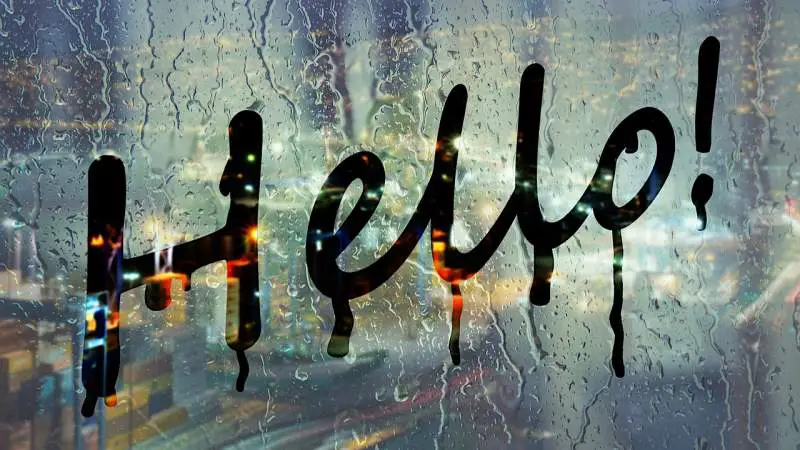
You had me at hello. A simple “hello” is the likely the first thing you will say to someone whether at home or while travelling abroad. It comes in different forms, different actions, different sounds, and different languages, but they all have the same intention and significance — to gain the attention and acknowledge the presence of another. Read on to find out exactly how to say hello in different languages around the world. I’ve got you covered, guys: Over 200 ways… It’s a bumper edition!
It all starts with that one “Hello!”
A word that breaks the ice, starts a conversation, generates a smile, and creates a memory.
One of the best things you can know as a traveller exploring the countries around the world is how to say “Hello” in the country you are visiting. It creates a good impression, and conveys respect.
It’s friendly, it’s polite, it’s simple.
Did you know that if you want to say hello to every person in the world, you would need to learn those words from 6,500 languages.
Ain’t nobody got time for that.
Fortunately just by reading this guide I have put together for you, you will be able to say hello to over 85% of the world’s population. How dope is that?
Add that to your CV 😉
Want to learn how to say GOOD MORNING, THANK YOU or GOODBYE too?
Read this guide to say good morning in different languages;thank you in different languages;how to say goodbye in every other language; andcheers in different languages.
Did you know that the 21st of November is World Hello Day?
Here’s your ultimate guide on how to say hello in 100 different languages around the world.
With pronunciation! In brackets you will find how to pronounce the word as it can often be difficult to know how to vocalise the word just by reading or looking at the direct translation.
Are you ready to take a trip and learn how to greet everyone around the world, travel lover?
I have included hi in every language I could think of. If I missed your language, let me know (in the comments) and I will be happy to add it.
Let’s go… Be sure NOT to miss the bonus at the end ↓↓
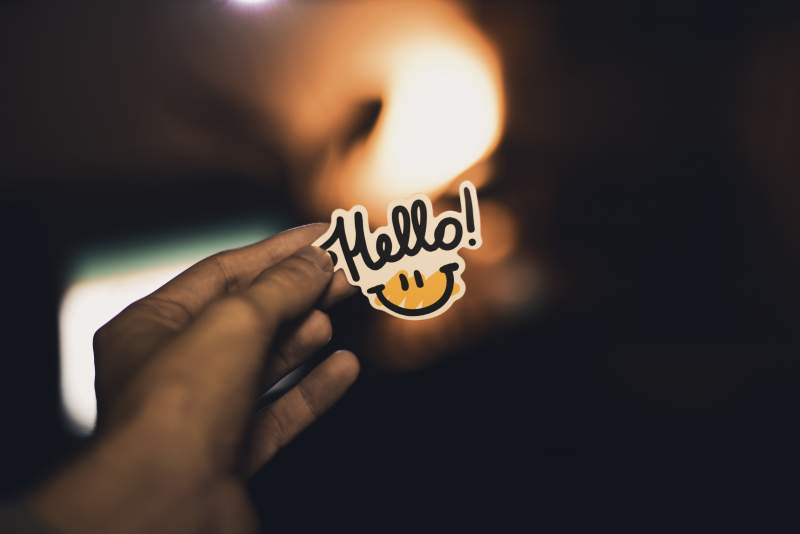
Read next: How to say ‘I love you’ in the most spoken languages in the world
Greetings in different languages —> Here is how you say hello in every language:
- hallo (hal-low)
Afrikaans is a West Germanic language of southern Africa mostly derived from Dutch. It is mainly spoken in South Africa and Namibia by around 6 million people as their first language. It can also be heard in parts of Botswana and Zimbabwe.
- hay (hi)
Aklan also known as Aklanon is an Austronesian language spoken by 460,000 Aklanon people in the province of Aklan on the island of Panay in the Philippines.
- përshëndetje (Per-shen-DEAT-ye)
- tungjatjeta (toon-jah-TYEH-tah) — formal hello
- tjeta (TYEH-tah) — informal hello
Albanian is an Indo-European language, spoken mainly in Albania and Kosovo, though it is also spoken in other areas of the Balkans. With about 7.5 million speakers, it comprises an independent branch within the Indo-European languages and is not closely related to any other language in Europe.
- aang
Aleut or Unangam Tunuu is a member of the Eskimo-Aleut language family, spoken by the Aleut people living on the Alaskan Peninsula, and on the Commander, Aleutian, and Pribilof Islands. It is the only language in the Aleut branch of the Eskimo-Aleut language family.
- hallo
- salü
- güete tag
- buschur
Alsatian is a West Germanic language spoken by around 900,000 people, mainly in the Alsace region of northeastern France.
- Эзендер
Altai is a language belonging to the Turkic language family and is officially spoken in the Altai Republic of Russia.
Hello in Amharic is:
- ጤና ይስጥል: Teanastëllën (teen-as-tell-an) — formal
- ታዲያስ: Tadiyas — informal
- ሰላም sälam — informal
- salamno (SalamnO) — male
- salamnish (SalamNISH) — female
Amharic is a Semitic language and the official language of Ethiopia. Hello not only means hello but also peace be with you. It can also be heard in Egypt and Eritrea, as well as in Israel, Sweden, Canada, and the United States.
How do you say hello in Arabic:
- as-salām ‘alaykum (ahs-sahlahm ‘ah-leh-loom) السلام علیکم — formal hellomeaning peace be with you
- This can be shortened to salaam سلام
- marhaba (mahr-hah-bah) مرحبا — informal hello
- ahlan (ah-lahn) — informal hello
Arabic (العربية) is a Semitic language spoken by over 420 million people as their first language in areas including North Africa, the Arabian Peninsula, and other parts of the Middle East. Many more people can also understand it as a second language. Modern Standard Arabic is the liturgical language for 1.6 billion Muslims and is the official written form of the language with the Arabic alphabet, which is written from right to left.
- ola
Aragonese is a language in the Romance language family that is native to Spain and spoken by just over 10, 000 people in the Pyrenees valley of Aragon.
- shlama — meaning peace
- shlam’alokhon — peace be upon you
Aramaic ארמית is a member of the Semitic branch of the Afro-Asiatic language family that originated among the Arameans in the ancient region of Syria. It has a 3,000-year history and is still spoken by small groups of people in different parts of the Middle East.
- héébee — (man speaking)
- tous — (woman speaking or a man speaking to a woman)
Arapaho is one of the Plains Algonquian languages from the Algic language family, spoken by the Arapaho of Wyoming and Oklahoma.
How to say hello in Armenian:
- barev dzez (bah-REV DZEZ) — formal way to say hello
- barev (bah-REV) — informal hello
Xem thêm: Top 14 ứng dụng nào không phải là ứng dụng của glucozo
Armenian is an Indo-European language spoken in the Republic of Armenia, as well as in large communities of Armenian diaspora by around 6.7 million people.
- oi ঐ — informal hello
- nomoskar নমস্কাৰ — formal way to say hello
Assamese is an Indo-Aryan language spoken in the northeast Indian state of Assam, where it is an official language. Native to India and Bangladesh, it is spoken by over 23 million people.
- shlamaloukh — (m)
- shlamalakh — (f)
- shlamalokhoun — to a group of people
Assyrian, also known as Syrian or neo Aramaic is the East Semitic dialect that evolved from ancient Akkadian after 1950 B.C. As a Semitic language, it originated from the middle eastern region and is related to Arabic and Hebrew.
- hola
Asturian is a West Iberian Romance language spoken by around 400,000 people in Asturias, Spain.
- hello
- g’day
- howdy
Australia has no official language, however Australian English is the variety of English spoken here.
- cалам سلام (sa-laam)
- salam əleyküm (sa-laam-mu-alaikum)
Azerbaijani or Azeri is the primary and official language of Azerbaijan by its 8.8 million native speakers. It is also widely spoken in Northern Iran and to a small extent in southern Dagestan, the Kvemo Kartli region of Georgia, eastern Turkey, in Shia cities of Iraq, like Karbala and Kirkuk. The language is a Turkic language and is highly intelligible with modern-day Turkish.
- om suastiastu — this means peace and greetings from God
Balinese belongs to the Malayo-Polynesian language family and is spoken by around 3.3 million people on the Indonesian island of Bali as well as the regions of Nusa Penida, Lombok, Java, Sumatra, and Sulawesi.
- kaixo (kai-show) — hello
- egun on (egg-un own) — morning
- gau on (gow own) — night
Basque (euskara) is a language spoken in the Basque Country (Gipuzkoa, Araba, Bizkaia) and Navarra (in Spain) as well as in the French Basque Country (Labourd, Soule and Basse-Navarre). Linguistically, Basque is a language isolate and is unrelated to the other languages of Europe.
- сәләм (säläm)
Bashkir is an endangered language belonging to the Kipchak branch of the Turkic languages. Closely related to the Tatar and Kazakh languages, it is spoken by around 1.4 million native speakers in Russia, as well as in Ukraine, Kazakhstan, Belarus, Uzbekistan, and other neighboring post-Soviet regions.
- servus (SER-VOOS)
- seavus (SE-ah-VOOS)
- grüß Gott (gruess got) — formal
Bavarian is a regional dialect of German spoken in the German state of Bavaria, western Austria, and Northeastern Italy by over 14 million people. It uses German grammar, but takes several root words from Latin.
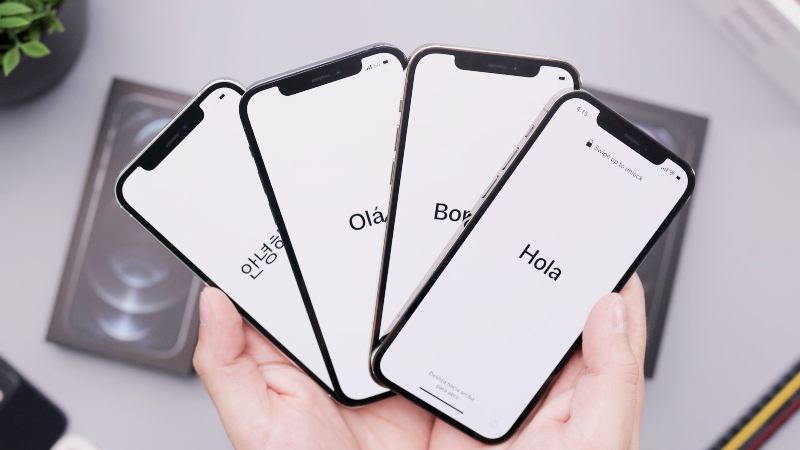
- biтаю (vee-tie-you)
Belarusian is the official language of Belarus. This East Slavic language is also spoken in Russia, Ukraine and Poland.
- নমস্কার (nomoshkaar /namaskāra)
Bengali বাংলা is the only official language of Bangladesh, one of the 22 official languages of India, and the sixth most spoken language in the world. It is spoken as a first language by the majority of the population in Bangladesh, as well as people in the Indian state of West Bengal.
- azul
Berber, also known as the Amazigh languages, is a branch of the Afroasiatic language family that comprises of around forty closely related languages spoken by the Berbers. The Berber people are indigenous to North Africa, with the heaviest concentration found in Morocco. The major Berber languages include Tamazight, Tarifit, Tashelhit (Tashelhiyt, Tashelhait, Shilha), Kabyle, and Tamahaq.
- प्रणाम (prannam)
Bhojpuri is an Indo-Aryan Bihari language, considered to be one of the most rapidly growing languages in the world, spoken by over 40 million speakers in northern-eastern India and the Terai region of Nepal.
- halo
Bislama is an English-based creole language and one of the official languages of the island of Vanuatu with around 10,000 native speakers.
Say hello in Bodo:
- wai
- oi
- oye
Bodo बर’/बड़ is the Sino-Tibetan language spoken primarily by the Bodo people of Northeast India, Nepal, and Bengal. It is official language of the Bodoland Autonomous region and co-official language of the state of Assam in India.
- dobar dan (DOH-bahr dahn)
- zdravo (ZDRAH-voh) — informal
- merhaba (MEHR-hah bah) — informal
Bosnian, a south Slavic language of the Indo-European family, is the official language of Bosnia and is essentially the same language as Croatian and Serbian. All three languages used to be known as Serbo-Croatian before the break-up of Yugoslavia.
- olá or oi
Brazilian Portuguese (Português do Brasil) is the variety of Portuguese dialect spoken in Brazil. It is spoken by virtually all of the 200 million inhabitants of Brazil and spoken widely across the Brazilian diaspora. European Portuguese differs from the Brazilian variety in pronunciation, as well as in some vocabulary.
- demat (de-mat)
Breton is a Southwestern Brittonic language of the Celtic language spoken in Brittany in the northwest of France.
Say hello in Bulgarian:
- zdravei when speaking to one person — formal
- zdraveĭte Здравейте when speaking to a group of people — formal
- zdrasti Здрасти — informal greeting
Bulgarian is a South Slavic language spoken in Southeastern Europe, primarily in Bulgaria. It is the country’s only official language and Bulgarian is written with Cyrillic.
In a different language hello in Burmese is:
- mingalarba (meen-gah LA-ba)
Burmese is a Sino-Tibetan language spoken in Myanmar where it is an official language and the language of the Bamar people, the country’s principal ethnic group.
- chum reap suor (jum reap sour) ជំរាបសួរ
- sous-dey — informal hi languages
Khmer is the language of the Khmer people and the official language of Cambodia. With over 16 million speakers, it is the second most widely spoken Austroasiatic language.
- hola (OH-lah)
Catalan is a Western Romance language derived from Vulgar Latin and named after the medieval Principality of Catalonia, in northeastern of modern Spain. It is the only official language of Andorra, and a co-official language of the Spanish autonomous communities of Catalonia, the Balearic Islands and Valencia.
- kumusta (koo-moos-tah)
Cebuano, also known as Bisaya or Binisaya, is an Austronesian language spoken in the southern Philippines region in Central Visayas, western parts of Eastern Visayas and the majority of Mindanao.
- hafa adai
- hafa dei
Chamorro is an Austronesian language, the native and spoken language of the Chamorro people, who are the indigenous people of the Mariana Islands.
- haaahe — male
- héehe — femaleThere is no specific word for hello in the Cheyenne language, instead a hand gesture similar to calm down is used.
Cheyenne is the Native American language spoken by the Cheyenne people of the United States. It is part of the Algonquian language family. The Cheyenne are a Native American tribe that live in the Great Plains of Minnesota, Montana, Oklahoma, Colorado, Wyoming and South Dakota.
- moni bambo to a male
- moni mayi to a female
- moni moni onse (mooni-mooni-on-se) is used as a general greeting hello to everyone.
Chichewa, also known as Nyanja, is a Bantu language spoken in much of the south, southeast, east and other parts of Africa. It is the national language of Malawi and is also spoken in Zambia, Mozambique and Zimbabwe.
How to say hello in Cantonese:
- néih hóu 你好
Cantonese is a variety of Chinese originating from the city of Guangzhou and its surrounding area in Southeastern China. Belonging to the Sino-Tibetan family of languages, it is the traditional prestige variety of the Yue Chinese dialect group, which has about 68 million native speakers.
- The Chinese greeting is 你好 nǐ hǎo你 means “you” and 好 means “good”
Mandarin Chinese is the official language of Mainland China and Taiwan, and is one of the official languages of Singapore. Mandarin is often placed first in lists of languages by number of native speakers with almost a billion speakers.
- guuten takh
Cimbrian is a language of Germanic origin spoken by more than 2,000 people in Northern Italy. It is related to Bavarian and refers to any of several local Upper German varieties spoken in the region, with the speakers of the language referred to as Zimbern.
- dydh da
Cornish is a Southwestern Brittonic language that forms part of the Celtic language family. It became an extinct language in Cornwall at the end of the 18th century and underwent a revival in the 20th century.
Xem thêm: Top 10+ đẹp vô cùng tổ quốc ta ơi đầy đủ nhất
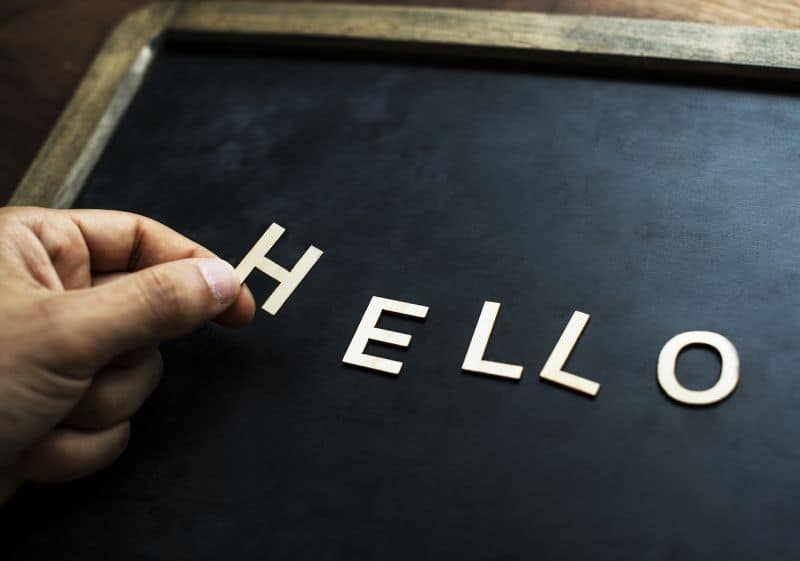
- bonghjornu (bwohn JOHR-noh)
Corsican is a Romance language from the Italo-Dalmatian family that is spoken predominantly on the Mediterranean island of Corsica. Corsican is closely related to Tuscan and to the Florentine-based Italian.
Learn how to say hello in Croatian:
- bok (bohk)
- dobar dan — good day
Croatian or Hrvatski is a South Slavic language spoken mainly in Croatia, Bosnia and Herzegovina, some parts of Serbia, and the neighbouring countries by about 5.5 million people.
- ahoj (ahoy) — casual hello
- dobrý den (DOH-bree dehn) — good day
Czech is a Western Slavic language which is mutually intelligible with Slovak. It is mainly spoken in the Czech Republic with over 10,5 million speakers.
- hej (hai) — casual hi
- hallo (ha-loh) — hello
Danish is a Scandinavian language and the only official language of the Kingdom of Denmark. It is spoken in Denmark and in some parts of Greenland and is closely related to Swedish and Norwegian.
- assalaamu alaikum — meaning peace be to you
Dhivehi or Maldivian is an Indo-Aryan language spoken on the islands of Maldives where it is an official language.
- ke aal aee
Dogri is a Northern Indo-Aryan language spoken by around five million people in India, mainly in the Jammu region of Jammu and Kashmir.
- hallo (HAAL-oo)
- goedendag
- hoi — informal hi
Dutch is a West Germanic language spoken by about 27 million people world-wide mostly in the Netherlands and northern Belgium.
How to say hello in Dzongkha:
- kuzu-zangpo la (koo-zoo-zang-poh-la)
Dzonkha or Bhutanese is the sole official and national language of the Kingdom of Bhutan. This Sino-Tibetan language is spoken by over half a million people in Bhutan and is written with the Tibetan alphabet.
- häj ą̊ dig
- häj
- allo
Elfdalian also called Övdalian is a North Germanic Indo-European language spoken by up to 3,000 people in the Älvdalen region of Sweden.
- hello
English is a West Germanic language that was first spoken in Anglo-Saxon England in the early Middle Ages. It is spoken in many countries around the world with over 375 million native speakers. English is the second most spoken language, and the most international language in the world.
- tere (TEHR-reh)
Estonian is a Finno-Ugric language spoken as the official language in Estonia. It is closely related to Finnish.
- halló (hahloh)
- hey (huhy)
Faroese is a North Germanic language spoken as a first language by Faroe Islanders, residing on the Faroe Islands and in other areas, mainly Denmark.
- سلام Salām
- درود بر تو Dorood bar to
- درود بر شما Dorood bar shoma
Persian is an ancient language belonging to the Iranian branch of the Indo-Iranian subdivision of the Indo-European languages. It is a pluricentric language predominantly spoken and used officially within Iran, Afghanistan, and Tajikistan.
- bula (mbula)
Fijian is an Austronesian language of the Malayo-Polynesian family. It is an official language of Fiji spoken by some 350,000 – 450,000 ethnic Fijians as a native language.
- hyvää päivää (HUU-vaa PAI-vaah) – good day
- hei (hay) — informal hey
- terve (TEHR-ve) — informal hello
- moi (Moy) — informal hey
Finns usually greet each other in an informal way, so you can use these greetings in 99% of all situations.
Finnish is a Finno-Ugric language spoken only in Finland as the official language and by ethnic Finns elsewhere in Scandinavia.
- hallo (hah-low)
Flemish is a Low Franconian dialect cluster of the Dutch language, native to the historical region of Flanders in northern Belgium. It is sometimes referred to as Flemish Dutch, Belgian Dutch, or Southern Dutch spoken by over 6 million people.
How to say hello in French:
- bonjour — good dayBon means “good” and Jour means “day”Bonjour is flexible and can be used both formally and informally at anytime of the day. You can use it with anyone, from a friend or family member, to someone you’ve just met.
- bonsoir — good evening
- salut (sah-LUU) is another way of saying hello.Informal often used with close friends and family.
- coucou — very informal. Fun greeting that should only be used with friends, family, and children.
- allô when answering the phone
French is a Romance language of the Indo-European family spoken by over 354 million people in France and around the world. It is the third most spoken language in Europe, the official language of 29 countries, spoken in parts of Africa, North America, and South America.
Hello in different languages – Frisian is:
- goeie (GOO-ee)
The Frisian languages are a closely related group of Germanic languages, spoken by about 500,000 Frisian people, who live on the southern fringes of the North Sea in the Netherlands and Germany.
- mandi
Friulian or Friulan is a Romance language of the Rhaeto-Romance family. It is spoken in the Friuli region of northeastern Italy with around 600,000 total speakers.
- a jaaraama
- sannu — informal
Fula, also referred to as Fulani or Fulah, is a Senegambian branch of the Niger-Congo language family spoken by more than 40 million people in Central and West Africa.
- ola
Galician is a Romance language spoken by around 2.4 million people in Galicia, a region in northwestern Spain, where it is the official language.
- მიესალმები (miesalmebi)
- გამარჯობა (gah-mahr-joh-bah)
Georgian is the official language of Georgia and the country’s most widely spoken language with over 4.1 million people.
Translate hello into German:
- hallo — informal
- tag (tahg) — casual
- guten tag (goo-ten tahk) — formal good day
German Deutsch is the official language of both Germany and Austria and one of the three official languages of Switzerland. German belongs to the West Germanic group of the Indo-European language family. One of the major languages of the world, German is a native language to almost 100 million people worldwide and the most widely spoken native language in the European Union.
- ko na mauri
- mauri — often shortened to this
Gilbertese, also called Kiribati, is an Austronesian Oceanic language spoken mainly in Kiribati, but also on the islands of Fiji, the Solomon Islands, and Tuvalu.
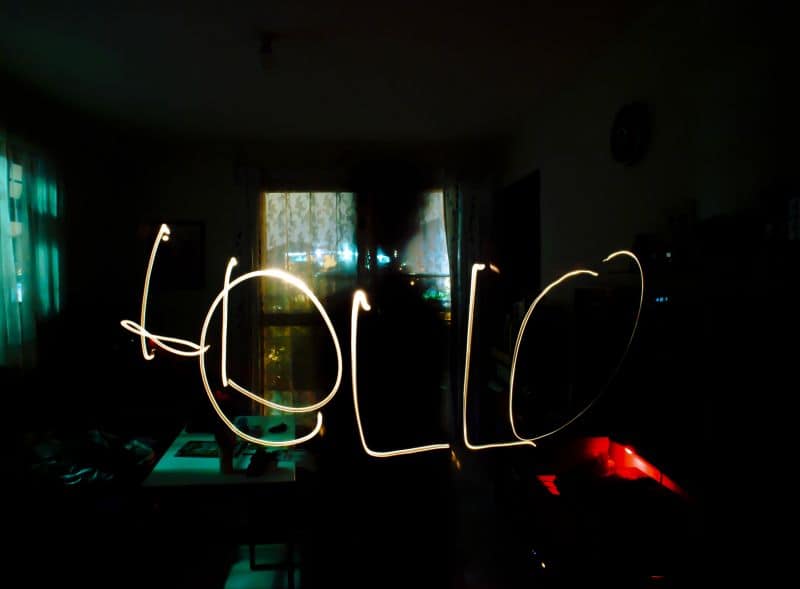
Hello in Greek:
- xαίρε (chai-ray) — hi
- yassas (YAH sahss) γεια σας — formal hello meaning, “health to you”
- yassou (YAH soo) γεια σου — informal helloto be used when talking to a friend, partner or someone younger than you.
To be time-specific use:
- kalimera — good morning
- kalispera — good afternoon
- kalinita — good evening
Greek (ελληνικά) belongs to the Hellenic branch of the Indo-European language family, mainly spoken in Greece and Cyprus as an official language. It has the longest documented history of any living Indo-European language, spanning more than 3000 years of written records. There are about 13.1 million speakers of Greek worldwide and it is recognised as a minority language in Albania, Armenia, Hungary, Italy, Romania, Turkey, and Ukraine.
- aluu — informal
- inuugujoq kutaa — formal
Xem thêm: Top 10 x 3 12x 2 48x 64
Greenlandic falls under the Eskimo-Aleut language family, spoken by around 57,000 Greenlandic Inuit people in Greenland.
- namaskaar
- namaste (nah-mah-steh)
- kem cho (kem-choh)
Gujarati is an Indo-Aryan language native to the Indian state of Gujarat and spoken predominantly by the Gujarati people. Gujarati is part of the greater Indo-European language family.
Say hello in different languages – Haiti:
- alo — hello
- bonjou (BOH-joo) — formal hello
- sak pase (sak-pase) — informal what’s up
Haitian Creole (kreyòl ayisyen)) is a French-based creole language spoken by 10-12 million people worldwide and the only language of most Haitians. Along with French it is one of the official languages of Haiti.
- sannu (san-NU)
Hausa language, the most important indigenous bridge language in West and Central Africa, spoken as a first or second language by about 40-50 million people. It belongs to the Western branch of the Chadic language family within the Afro-Asiatic language phylum. It is spoken mainly in northern Nigeria and Niger, and also in Benin, Burkina Faso, Cameroon, the Central African Republic (CAR), Chad, Congo, Eritrea, Germany, Ghana, Sudan and Togo.
How to say hello in Hawaiian:
- aloha
The Hawaiian language is a Polynesian language that takes its name from Hawaiʻi, the largest island in the tropical North Pacific archipelago where it developed. Hawaiian, along with English, is an official language of the State of Hawaii.
- שלום shalom (shah-LOHM)
- ma korae — informal greeting
Hebrew is a Northwest Semitic language spoken by over nine million people worldwide. Historically, it is regarded as the language of the Israelites and their ancestors. It is written using its own script from right to left.
How to say hello in Hindi:
- namaste (Nah-mas-teh) नमस्तेSaying hello in Hindi are not time-specific, so you can say this any time of the day or night to begin and end interactions with everyone from friends and strangers to elders and children.
Namaste is a greeting of respect and humility and comes from the Sanskrit words namah and te, which mean “bow” and “to you.” The greeting is paired with a slight bow of the head. Place both palms in front of the chest in a prayer-like position and as you say “namaste,” bow your head slightly.
There’s a strong spiritual element in the greeting. You’re not only acknowledging the presence of the other person, but also the divine that exists in everybody and the totality of humanity.
Hindi (हिन्दी) is an Indo-European language spoken in India, Nepal, and throughout the Indian diaspora. Hindi is descended from Sanskrit, sometimes called “the mother of all languages.” While there are 22 official languages and over 1,000 dialects of India, Hindi and English take precedence in government affairs. It is a link-language for over half of India’s population.
- nyob zoo
Hmong is a Hmong-Mien language spoken by about 2.6 million people in China, Vietnam, Laos, Thailand, USA, and French Guiana.
- ha’u (hah-uh)
- waynuma
Hopi is a Uto-Aztecan language spoken by the Hopi people in northeastern Arizona, USA.
How to say hello in Hungarian:
- jó napot (yoe naupote)
- szervusz (SEHR-voos)
- szia (SEE-ah) — informal hello
Hungarian is a Uralic language of the Ugric branch spoken in Hungary and parts of several neighbouring countries. It is the official language of Hungary and one of the 24 official languages of the European Union.
- halló (hal-law)
- góðan dag (gothan dahg)
- hæ (hai) — informal hi
- Sæll (Sight-l.) (to a man) — informal hello
- Sæl (Sigh-l.) (to a woman) — informal hello
- whaa gwaan
- ello
Jamaican Patois, often also referred to as Jamaican Creole, is an English-based creole language with West African influences spoken mainly in Jamaica. Belonging to the English Creole language family, it is spoken by the the majority of Jamaicans with over 3 million native speakers.
- halo
Javanese is the language of the Javanese people of the island of Java in Indonesia, where it is the native language of more than 98 million people.
- terveh
Karelian is a Finno-Ugric language of the Uralic language family, spoken in Karelia republic of northwestern Russia.
- witôj
- witôjtaż — hello all to more than one person
Kashubian is a member of the West Slavic group of Slavic languages with around 100,000 speakers in Poland.
- wĩmwega
Kikuyu or Gĩkũyũ is a Bantu language of the Niger-Congo language family that is spoken as a first language by over 6.6 million Agĩkũyũ people in Kenya.
- muraho bite — informal
- uraho
Kinyarwanda, an official language of Rwanda, is a Bantu language of the Niger-Congo language family that is spoken by at least 10 million people in Rwanda, DR Congo, and Uganda.
- bwakeye
- amahoro (a-ma-ho-ro)
Kirundi, or Rundi, is a Bantu language of the Niger-Congo language family, spoken by over 9 million people in Burundi where it is the official language. It is also spoken in parts of Tanzania, the Democratic Republic of the Congo, and in Uganda.
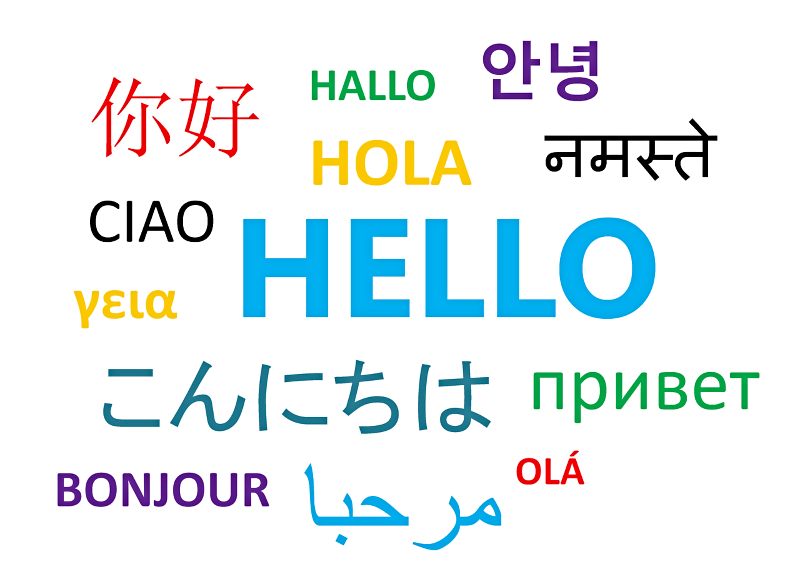
Aaaaaaaand now you know how to say hello in other languages.OVER TO YOU GUYS! How do you say HELLO in your language? Extra brownie points if you can speak several languages… Let me know in the comments.
LEARN THESE OTHER WORDS TOO!>> Before you go, be sure to check out these other resources on how to say:
MY LOVE in different languages around the world
GOOD NIGHT in different languages
LIGHT in different languages from the world
GOODBYE in every language of the world
LOVER in a different language
FRIEND in all languages
THANK YOU in other languages
GOOD MORNING in another language
CHEERS in many languages
BEAUTIFUL in a different language
Cheers,Rai x
Top 15 greetings in all languages have the same purpose tổng hợp bởi Lambaitap.edu.vn
Learn English Greetings | Lingoda Online English Language School
- Tác giả: lingoda.com
- Ngày đăng: 09/11/2022
- Đánh giá: 4.92 (804 vote)
- Tóm tắt: Read all about English greetings and learn the most common ones in this page. … At the same time, the greetings you would use for those examples may be …
- Nguồn: 🔗
Đề thi khảo sát chất lượng môn Tiếng Anh lớp 11 trường THPT Liễn Sơn, Vĩnh Phúc
- Tác giả: dethiviet.com
- Ngày đăng: 01/18/2022
- Đánh giá: 4.66 (274 vote)
- Tóm tắt: Question 8: Parts of the mountain road have been … Greetings in all languages have the same purpose: to establish contact with another …
- Nguồn: 🔗
Đề KTCL môn Tiếng Anh lớp 11 trường THPT Liễn Sơn – Vĩnh Phúc năm học 2017-2018 (có đáp án)
- Tác giả: text.loga.vn
- Ngày đăng: 01/19/2022
- Đánh giá: 4.32 (356 vote)
- Tóm tắt: Greetings in all languages have the same purpose: to establish contact with another person, to recognize his or her existence and to show friendliness.
- Khớp với kết quả tìm kiếm: Greetings in all languages have the same purpose: to establish contact with another person, to recognize his or her existence and to show friendliness. The formulas for greeting are very specific and usually do not carry any literal meaning people …
- Nguồn: 🔗
Xem thêm: Top 16 he has been learning hard to prepare
B06NguyenThiBichHang-English and Vietnamese Greetings
- Tác giả: academia.edu
- Ngày đăng: 12/18/2021
- Đánh giá: 4.15 (496 vote)
- Tóm tắt: However, modes of communication in all languages are not the same. That is the reason why imposing the rules of one language on another’s can cause negative …
- Nguồn: 🔗
Đề thi khảo sát chất lượng lần 3 môn Tiếng Anh lớp 11 trường THPT Liễn Sơn, Vĩnh Phúc năm học 2015 – 2016
- Tác giả: text.123docz.net
- Ngày đăng: 08/31/2022
- Đánh giá: 3.98 (203 vote)
- Tóm tắt: Greetings in all languages have the same purpose: to establish contact with another person, to recognize his or her existence and to show friendliness.
- Nguồn: 🔗
Greetings in all languages have the
- Tác giả: vi4.ilovetranslation.com
- Ngày đăng: 06/10/2022
- Đánh giá: 3.79 (411 vote)
- Tóm tắt: Greetings in all languages have the same purpose: to establish contact with another person. to recognize his or her existence. and to show friendliness.
- Nguồn: 🔗
Đề KSCL môn tiếng Anh lớp 11 (lần 3) trường THPT Liễn Sơn, Vĩnh Phúc có đáp án
- Tác giả: vndoc.com
- Ngày đăng: 05/20/2022
- Đánh giá: 3.59 (346 vote)
- Tóm tắt: Greetings in all languages have the same purpose: to establish contact with another person, to recognize his or her existence and to show …
- Khớp với kết quả tìm kiếm: Greetings in all languages have the same purpose: to establish contact with another person, to recognize his or her existence and to show friendliness. The formulas for greeting are very specific and usually do not carry any literal meaning people …
- Nguồn: 🔗
Xem thêm: Top 8 tiếng anh 8 unit 1 skills 1 chính xác nhất
Greetings in all languages have the same purpose: to establish contact with another person, to recognize his or her existence and to show friendliness. The formulas for greeting are very specific and usually do not carry any literal meaning. People say Good morning even if it is a miserable day and may reply to How are you? with Fine, thanks even if they aren’t feeling well. Closings, like greetings, are commonly used to exchange with no literal meaning. People who are leaving each other permanently or for a long time shake hands or embrace, depending on the relationship. If you are in an unfamiliar situation and wonder what to do, watch other people or ask. It is interesting, and sometimes very important to learn about the standards of courtesy in different cultural areas of the world, so that we can practise them well and avoid awkwardness in case we get a chance to visit a person or a community of unfamiliar social customs. 1. Which of the following is NOT mentioned in the passage as a purpose of greetings? A.To create contact with the person being greeted. B.To show that you recognize his or her present. C.To show that you are ready to admire him or her. D.To show that you are willing to be his or her friend. 2.Which of the following is a characteristic of the formulas for greeting? A.Literal B.Specific C.Usual D.Common 3.In what way are closings similar to greeting? A.They are common. B.They are exchanges. C.They are familiar. D.They have no literal meaning. 4.According to the passage, what should you do when you are in an unfamiliar situation? A.Observe what other people do. B.Use formulas you know. C.Wonder what you should do. D.Ask your friends for help. 5.Which of the following is a benefit of learning about the standards of courtesy in a different cultural area? A.You can act comfortably when you have a chance to visit the community. B.You can have a chance to visit a community of unfamiliar social customs. C.You can practice meeting with people from different cultural areas. D.You can avoid meeting with a community of unfamiliar social customs
- Tác giả: hoidap247.com
- Ngày đăng: 09/18/2022
- Đánh giá: 3.28 (511 vote)
- Tóm tắt: Greetings in all languages have the same purpose: to establish contact with another person, to recognize his or her existence and to show friendliness.
- Nguồn: 🔗
Ngoại ngữ – Tiếng anh | Cộng đồng Học sinh Việt Nam
- Tác giả: diendan.hocmai.vn
- Ngày đăng: 05/24/2022
- Đánh giá: 3.03 (480 vote)
- Tóm tắt: Read the passage and then decide which answer A, B, C or D best each space: Greeting in all languages have the same (1)_____ : to establish …
- Nguồn: 🔗
2.GREETINGS, PRECLOSINGS, AND CLOSINGS Greetings
- Tác giả: cirendeni.blogspot.com
- Ngày đăng: 05/06/2022
- Đánh giá: 2.86 (107 vote)
- Tóm tắt: Greetings in all languages have the same purpose: to establish contact with another person, recognize his or her existence, …
- Nguồn: 🔗
Hello in Different Languages | Rosetta Stone®
- Tác giả: rosettastone.com
- Ngày đăng: 08/18/2022
- Đánh giá: 2.76 (147 vote)
- Tóm tắt: Learn how to say ‘hello’ in different languages. Here’s a list of the formal ways to say “Hello” in ten languages to get you started learning a new …
- Nguồn: 🔗
Xem thêm: Top 21 tieng viet lop 5 trang 10 đầy đủ nhất
Learn to say ‘Hello’ in 50 languages
- Tác giả: twinenglishcentres.com
- Ngày đăng: 01/15/2022
- Đánh giá: 2.72 (103 vote)
- Tóm tắt: Or why not celebrate today by learning how to say hello in a different language? Language. Greetings: ‘Hello’. Arabic. Marhaba. Bavarian and Austrian …
- Nguồn: 🔗
Greetings in Different Languages
- Tác giả: redefinerswl.org
- Ngày đăng: 11/20/2021
- Đánh giá: 2.56 (133 vote)
- Tóm tắt: Every language has a way of starting a conversation with another person, which is known as a greeting. In these languages, every conversation, …
- Nguồn: 🔗
First Term Test (phần V, VI, VII, VIII, IX) – Bài tập nâng cao Tiếng Anh 8 – Chương Trình Mới
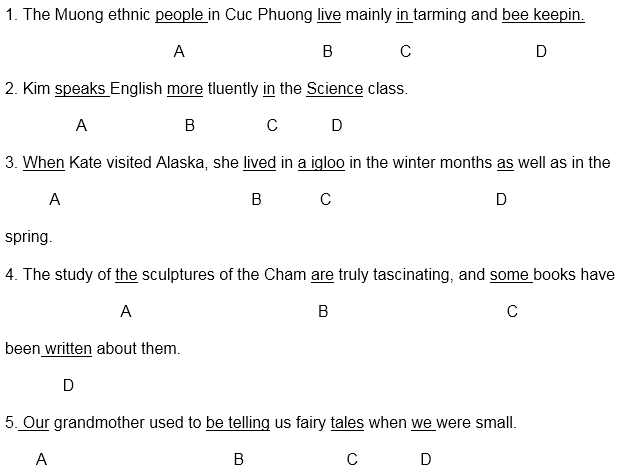
- Tác giả: hoc360.net
- Ngày đăng: 05/03/2022
- Đánh giá: 2.39 (150 vote)
- Tóm tắt: Greetings in all languages have the same purpose: to establish contact with another person, to recognize his or her existence and to show …
- Khớp với kết quả tìm kiếm: Closings, like greetings, are commonly used to exchange with no literal meaning. People who are leaving each other permanently or for a long time shake hands or embrace, depending on the relationship. If you are in an untamiliar situation and wonder …
- Nguồn: 🔗
Functions of Greetings
- Tác giả: carla.umn.edu
- Ngày đăng: 02/27/2022
- Đánh giá: 2.41 (96 vote)
- Tóm tắt: Ritualized language use is also called phatic communion (Malinowski, … within and across languages, social groups, and even among the same …
- Nguồn: 🔗



